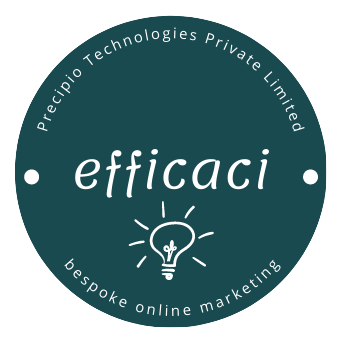Introduction
In today’s digital landscape, branding with content marketing has emerged as a cornerstone strategy for businesses aiming to forge meaningful connections with their audiences. Unlike traditional advertising, which often interrupts consumers with overt sales pitches, branding with content marketing focuses on delivering value through informative, engaging, and relevant materials. This approach not only elevates a brand’s visibility but also cultivates trust and loyalty over time. As we delve into this comprehensive exploration, we’ll uncover why this method is indispensable, how it facilitates information and brand discovery, and its role in global competition. Drawing from industry insights, case studies, and emerging trends, this article provides a roadmap for leveraging content to build a resilient brand identity in an increasingly crowded marketplace.
The evolution of consumer behavior has made branding with content marketing more critical than ever. With access to endless information, audiences seek authenticity and utility rather than mere promotion. Statistics reveal that 82% of companies actively employ content marketing, with 73% of B2B and 70% of B2C marketers integrating it into their overall strategies. This widespread adoption underscores its effectiveness in driving engagement and conversions. Over the next sections, we’ll break down the key elements, strategies, and future directions of this powerful synergy.
Why Brand with Content
Branding with content marketing offers a multitude of benefits that extend far beyond immediate sales. At its core, it humanizes a brand, transforming it from a faceless entity into a relatable partner in the consumer’s journey. One primary reason to adopt this approach is the ability to build trust and credibility. By consistently providing valuable content—such as blog posts, videos, or guides—brands position themselves as thought leaders in their industry. This fosters long-term relationships, as consumers are more likely to engage with and purchase from brands they perceive as helpful and authoritative.
Another compelling advantage is cost-effectiveness. Content marketing generates three times as many leads as traditional outbound marketing while costing 62% less, according to various industry reports. It also enhances SEO, driving organic traffic and improving search rankings. For instance, high-quality content can boost website visibility, making it easier for potential customers to find the brand during their research phase.
Moreover, branding with content marketing allows for personalized audience engagement. In an era where consumers expect tailored experiences, content can be customized to address specific pain points, preferences, and demographics. This personalization not only increases relevance but also strengthens emotional connections, leading to higher retention rates. As one expert notes, content marketing trends are shifting toward audience enrichment rather than pure product promotion, emphasizing targeted and customer-centric strategies.
Challenges exist, such as the need to stand out in a saturated digital space, but the rewards— including consistent brand messaging and loyalty—make it worthwhile. Integrating content into branding ensures that every piece of communication aligns with the brand’s voice, values, and goals, creating a cohesive narrative that resonates deeply.
Information Discovery
Information discovery is a pivotal aspect of branding with content marketing, as it aligns with how modern consumers seek and consume knowledge. In the digital age, people no longer rely solely on ads; they actively search for solutions to their problems. Content marketing capitalizes on this by creating discoverable assets that appear in search results, social feeds, and recommendations.
Search engines play a central role here. Optimizing content for SEO ensures that blogs, infographics, or videos rank highly for relevant queries, facilitating organic discovery. For example, evergreen content—timeless pieces like “how-to” guides—continues to attract traffic long after publication, providing ongoing value. This not only aids in information dissemination but also subtly reinforces the brand’s expertise.

Social media amplifies discovery through shareability. Viral content, such as short-form videos or memes, can spread rapidly, introducing the brand to new audiences. Platforms like TikTok and Instagram prioritize engaging, user-generated content, encouraging brands to create shareable stories that blend information with entertainment. As trends evolve, voice search optimization becomes crucial, with content tailored for conversational queries on devices like Alexa or Siri.
Email newsletters and podcasts further enhance discovery by delivering curated information directly to subscribers. These formats build anticipation and habit, turning one-time visitors into loyal followers. Ultimately, effective information discovery through content marketing transforms passive browsers into informed advocates, embedding the brand in their decision-making process.
Brand Discovery
Brand discovery complements information discovery by focusing on how audiences first encounter and perceive a brand. Branding with content marketing excels here by crafting narratives that reveal the brand’s personality, values, and unique selling propositions without overt selling.

Storytelling is key to this process. Compelling stories humanize the brand, making it memorable and relatable. For instance, content that shares behind-the-scenes insights or customer success stories allows audiences to connect emotionally, fostering initial curiosity and interest. As one X post highlights, storytelling adds depth, legacy, and heritage, making consumers feel part of something larger.
Visual and interactive elements accelerate discovery. Infographics, quizzes, and AR experiences draw users in, providing immediate value while subtly showcasing the brand. User-generated content, encouraged through campaigns, extends reach as satisfied customers share their experiences, acting as organic endorsements.
In a crowded market, differentiation is vital. Content that addresses niche topics or offers fresh perspectives helps brands stand out. By analyzing audience data, marketers can tailor discovery paths, ensuring content appears where potential customers are most active—be it LinkedIn for B2B or YouTube for tutorials. This strategic approach turns brand discovery into a seamless, value-driven introduction.
Taking on the World
Branding with content marketing empowers businesses to compete globally by transcending geographical boundaries. In an interconnected world, content serves as a universal language, allowing brands to reach international audiences with localized yet consistent messaging.
Global scalability is a major strength. Digital platforms enable content distribution worldwide at minimal cost, from social media to streaming services. Brands like Red Bull have mastered this by creating adrenaline-fueled content that resonates across cultures, building a global community around extreme sports and adventure.
Cultural adaptation is essential for “taking on the world.” Content must be sensitive to local nuances—translating languages, incorporating regional trends, and addressing specific market needs. For example, multinational companies use geo-targeted content to maintain brand integrity while appealing to diverse demographics.
Challenges include navigating regulatory differences and competition from local players, but content marketing’s flexibility allows for agile responses. AI tools aid in personalization at scale, analyzing global data to refine strategies. As markets evolve, brands leveraging content for global expansion gain a competitive edge, turning worldwide visibility into sustained growth.
Strategies for Effective Branding with Content Marketing
To maximize impact, brands must employ robust strategies. Start with audience analysis: Understand demographics, behaviors, and pain points through tools like surveys and analytics. This informs content creation, ensuring relevance.
Develop a content calendar aligned with brand goals. Mix formats—blogs for depth, videos for engagement, podcasts for accessibility—to cater to varied preferences. Consistency in tone and visuals reinforces brand identity.
Leverage SEO and distribution channels. Optimize for keywords while promoting via email, social, and partnerships. Collaborations with influencers amplify reach, adding credibility.
Incorporate storytelling principles: Use narratives to weave brand values into content, as seen in successful campaigns. Measure and iterate based on performance data to refine approaches continually.
Case Studies: Real-World Success Stories
Examining case studies illustrates the power of branding with content marketing. HubSpot’s inbound methodology, centered on educational blogs and resources, has built a massive user base by positioning the company as a marketing authority. Their content hub attracts millions, driving conversions through trust.
Another example is Salesforce’s Salesblazer community, which offers articles, videos, and expert advice. This initiative refocuses efforts on community-centric content, enhancing engagement and loyalty.
Column Five’s work with Bloomreach demonstrates how paid media strategies integrated with content can exceed goals by 30%, blending data-driven insights with compelling narratives.
These cases show that innovative, audience-resonant content can yield powerful results, from increased traffic to revenue growth.
Challenges and Solutions in Branding with Content Marketing
Despite its benefits, challenges abound. One major hurdle is content saturation: Standing out requires originality and value. Solution: Focus on unique angles and high-quality production.
Measuring ROI poses another issue, as impact isn’t always immediate. Use metrics like engagement rates, conversion funnels, and attribution models to track effectiveness.
Resource constraints affect smaller brands. Overcome this by prioritizing evergreen content and leveraging free tools like Canva or Google Analytics.
Adapting to algorithm changes demands agility. Stay informed on platform updates and diversify channels to mitigate risks.
Future Trends in Branding with Content Marketing
Looking ahead, AI will revolutionize content creation, enabling faster personalization and optimization. However, humanizing AI-generated content remains crucial to maintain authenticity.
Immersive technologies like VR and AR will offer experiential branding, allowing interactive storytelling.
Short-form video will dominate, with brands needing quick, impactful hooks on platforms like TikTok. Podcasts and audio content will rise, building deeper connections.
Sustainability and values-driven content will appeal to conscious consumers, aligning brands with social causes.
Measuring Success
Success in branding with content marketing hinges on key performance indicators (KPIs). Track website traffic, bounce rates, and time on page to gauge interest. Engagement metrics—likes, shares, comments—indicate resonance.
Conversion rates reveal if content drives actions like sign-ups or purchases. Tools like Google Analytics and HubSpot provide insights.
Brand sentiment analysis via social listening tools measures perception shifts. Long-term metrics, such as customer lifetime value, assess sustained impact.
Regular audits ensure strategies align with goals, allowing data-driven adjustments.
Conclusion
Branding with content marketing is not just a tactic; it’s a transformative philosophy that empowers brands to connect authentically in a digital world. From building trust through valuable information to discovering global opportunities, this approach offers enduring advantages. By embracing strategies, learning from case studies, navigating challenges, and anticipating trends, businesses can craft compelling narratives that resonate. As consumer expectations evolve, those who prioritize content-driven branding will thrive, turning audiences into advocates and ideas into legacies. In essence, effective branding with content marketing isn’t about selling—it’s about enriching lives and fostering loyalty that stands the test of time.


0 Comments